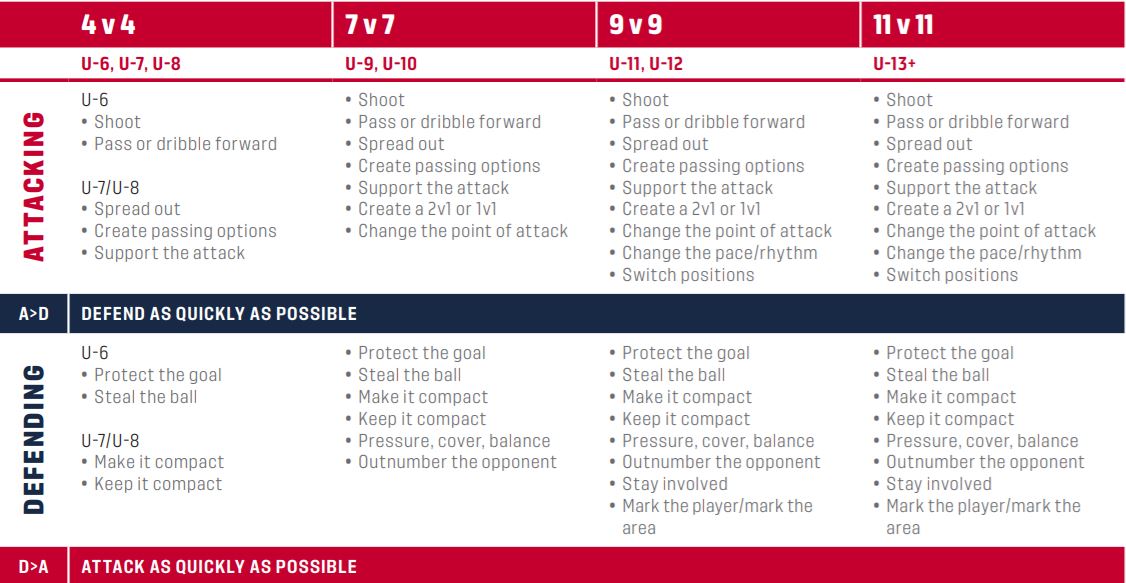
Practice and training materials for our volunteer coaches includes resources from our partners at Midland, MAYS and US Soccer. Focus for any training should be practice, play-practice-play following grassroots techniques for support.
You're not alone in this endeavor. The NYSA board is here to help you throughout the year with whatever you feel you may need. Do not hesitate to ask for any assistance that may be required.
NO LINES, NO LAPS AND NO LECTURES!!!
You're not alone in this endeavor. The NYSA board is here to help you throughout the year with whatever you feel you may need. Do not hesitate to ask for any assistance that may be required.
NO LINES, NO LAPS AND NO LECTURES!!!
Play-Practice-Play
The Practice Phase is where the players will actively learn through continued guidance from the coach. This phase uses game-like activities – directional, located in the corresponding area of the field for the training objective, and free-flowing with attacking, defending, and both transition moments. The activities set up meaningful repetitions of today’s goal.
There are three options (or challenge levels) in the Practice Phase: Core, Less Challenging, and More Challenging. Coaches start with the core activity and then decide to move to the less or more challenging activity to find the appropriate level of challenge for the players. Players build on their previous experiences from the 1st Play Phase and apply their own solutions with the coach’s guidance.
Along the way, players will make mistakes and the coach continues to help by not only using positive reinforcement, guided questions, and key words, but also other teaching actions such as demonstrations, feedback, or directions. The coach also interacts with the players about the “why” of the desired behaviors. The goal of the practice phase is to help players further develop their solutions to the challenges presented in the 1st Play Phase
There are three options (or challenge levels) in the Practice Phase: Core, Less Challenging, and More Challenging. Coaches start with the core activity and then decide to move to the less or more challenging activity to find the appropriate level of challenge for the players. Players build on their previous experiences from the 1st Play Phase and apply their own solutions with the coach’s guidance.
Along the way, players will make mistakes and the coach continues to help by not only using positive reinforcement, guided questions, and key words, but also other teaching actions such as demonstrations, feedback, or directions. The coach also interacts with the players about the “why” of the desired behaviors. The goal of the practice phase is to help players further develop their solutions to the challenges presented in the 1st Play Phase
Why Small-Sided Games?
|


